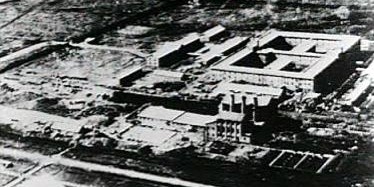WARNING: The following contains graphic content and descriptions. Reader discression is advised.
Others are reading now
A Secret Unit Made of Evil
Unit 731 was a covert division of Japan’s Kwantung Army, officially named the Epidemic Prevention and Water Purification Department, operating in occupied Manchuria from 1936 to 1945.
It served as a hidden laboratory for biological warfare and human experimentation.
The unit was commanded by Lieutenant-General Shirō Ishii, a microbiologist who believed biological weapons could secure Japan’s dominance.
He led the program until the end of the war in 1945.
Human Experimentation on a Chilling Scale
According to historians and survivor testimonies, between 3,000 and 14,000 prisoners—mainly Chinese civilians, but also Korean, Russian, and Allied POWs—were subjected to vivisection without anaesthesia, frostbite trials, organ removal, and high-altitude simulations.
The most inhumane program of Unit 731 involved forcing female prisoners to become pregnant, either through insemination or rape.
Also read
The goal was to research vertical transmission (from mother to child) of diseases—syphilis in particular.
Diseases Used as Weapons
Records describe how the unit infected victims with plague, anthrax, cholera, typhus, and other pathogens.
Biological weapons were deployed using fleas dropped from aircraft and through contaminated food and water, causing deadly outbreaks.
While roughly 3,000 prisoners are believed to have died directly in the experiments, researchers estimate that up to 200,000 civilians may have been killed by biological attacks across China.
These numbers vary depending on historical sources.
Immunity for Atrocities
Also read
After Japan’s surrender, the United States, under General Douglas MacArthur’s occupation authority, granted immunity to Ishii and his colleagues in exchange for their data on biological warfare.
As a result, they were never prosecuted by the Allies, though some members of Japan’s biological warfare program were later tried by the Soviet Union during the Khabarovsk War Crimes Trials in 1949.
The complex of Unit 731 was destroyed at the end of the war to cover up what had taken place.
The full extent of the atrocities remained hidden for decades.
In Japan, public discussion was minimal, while in the West, U.S. secrecy kept most details buried until the 1980s and 1990s, according to research published in EBSCO archives.
Survivors Speak Out
Also read
According to The Times, some surviving staff of Unit 731 have since shared horrifying testimonies detailing vivisections and deliberate infections they witnessed firsthand.
Many nationalists today still dismiss these accounts, and some former members have been alienated from their families for speaking out.
The former Unit 731 facilities in Harbin have been converted into a museum documenting the experiments.
Detailed exhibits and survivor testimonies now serve public education and remembrance.
Court Rules: It Happened
In 2002, the Tokyo District Court ruled that Japan’s wartime biological warfare program, including the activities of Unit 731, had indeed taken place.
Also read
However, the court rejected any compensation claims from surviving victims and their families, ruling that all reparation issues had been settled through postwar peace treaties.
Japan has never issued a full state apology for Unit 731
Occasional denials or minimizations by some historians and officials continue to strain relations, particularly with China and South Korea.
Sources
Reuters; The Lancet (2002 Tokyo court ruling); BBC; AP; The Times; EBSCO historical archives; Museum of Evidence of War Crimes by the Japanese Army Unit 731 (Harbin).
This article is made and published by Jens Asbjørn Bogen, who may have used AI in the preparation


